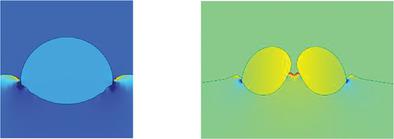当前位置:
X-MOL 学术
›
Macromol. React. Eng.
›
论文详情
Our official English website, www.x-mol.net, welcomes your
feedback! (Note: you will need to create a separate account there.)
Forces Driving the Development of Particle Morphology of Waterborne Polymer Dispersions
Macromolecular Reaction Engineering ( IF 1.8 ) Pub Date : 2021-10-28 , DOI: 10.1002/mren.202100038 Hesham Abdeldaim 1 , José M. Asua 1
Macromolecular Reaction Engineering ( IF 1.8 ) Pub Date : 2021-10-28 , DOI: 10.1002/mren.202100038 Hesham Abdeldaim 1 , José M. Asua 1
Affiliation

|
Particle morphology is a key characteristic of the waterborne polymer dispersions and plenty of effort has been dedicated to understand the mechanisms controlling the development of the morphology during polymerization. The availability of new characterization techniques that provide unprecedented quantitative details of the particle morphology have questioned the ideas about the driving forces ruling the development of the morphology. In this article, the case is considered of a seeded emulsion polymerization in which the second stage polymer (Polymer 2) is more hydrophobic than the seed polymer and a water-soluble initiator is used. Simulations of the effect of the different forces involved in the formation of the particle morphology carried by integrating the Navier–Stokes are compared with available experimental results. If is found that the interfacial tensions are responsible for the penetration of clusters of polymer 2 within the seed polymer and the spread of these clusters over the surface of the particle. On the other hand, van der Waals forces control coalescence of the clusters both at the surface and in the interior of the particle.
中文翻译:

推动水性聚合物分散体颗粒形态发展的力量
粒子形态是水性聚合物分散体的一个关键特征,并且已经投入大量精力来了解控制聚合过程中形态发展的机制。提供前所未有的粒子形态定量细节的新表征技术的可用性已经质疑关于支配形态发展的驱动力的想法。在本文中,考虑了种子乳液聚合的情况,其中第二阶段聚合物(聚合物 2)比种子聚合物更疏水,并使用水溶性引发剂。将 Navier-Stokes 积分所承载的粒子形态形成所涉及的不同力的模拟与可用的实验结果进行了比较。如果发现界面张力是导致聚合物2簇渗透到种子聚合物内以及这些簇在颗粒表面上扩散的原因。另一方面,范德华力控制粒子表面和内部的团簇的聚结。
更新日期:2021-10-28
中文翻译:

推动水性聚合物分散体颗粒形态发展的力量
粒子形态是水性聚合物分散体的一个关键特征,并且已经投入大量精力来了解控制聚合过程中形态发展的机制。提供前所未有的粒子形态定量细节的新表征技术的可用性已经质疑关于支配形态发展的驱动力的想法。在本文中,考虑了种子乳液聚合的情况,其中第二阶段聚合物(聚合物 2)比种子聚合物更疏水,并使用水溶性引发剂。将 Navier-Stokes 积分所承载的粒子形态形成所涉及的不同力的模拟与可用的实验结果进行了比较。如果发现界面张力是导致聚合物2簇渗透到种子聚合物内以及这些簇在颗粒表面上扩散的原因。另一方面,范德华力控制粒子表面和内部的团簇的聚结。











































 京公网安备 11010802027423号
京公网安备 11010802027423号